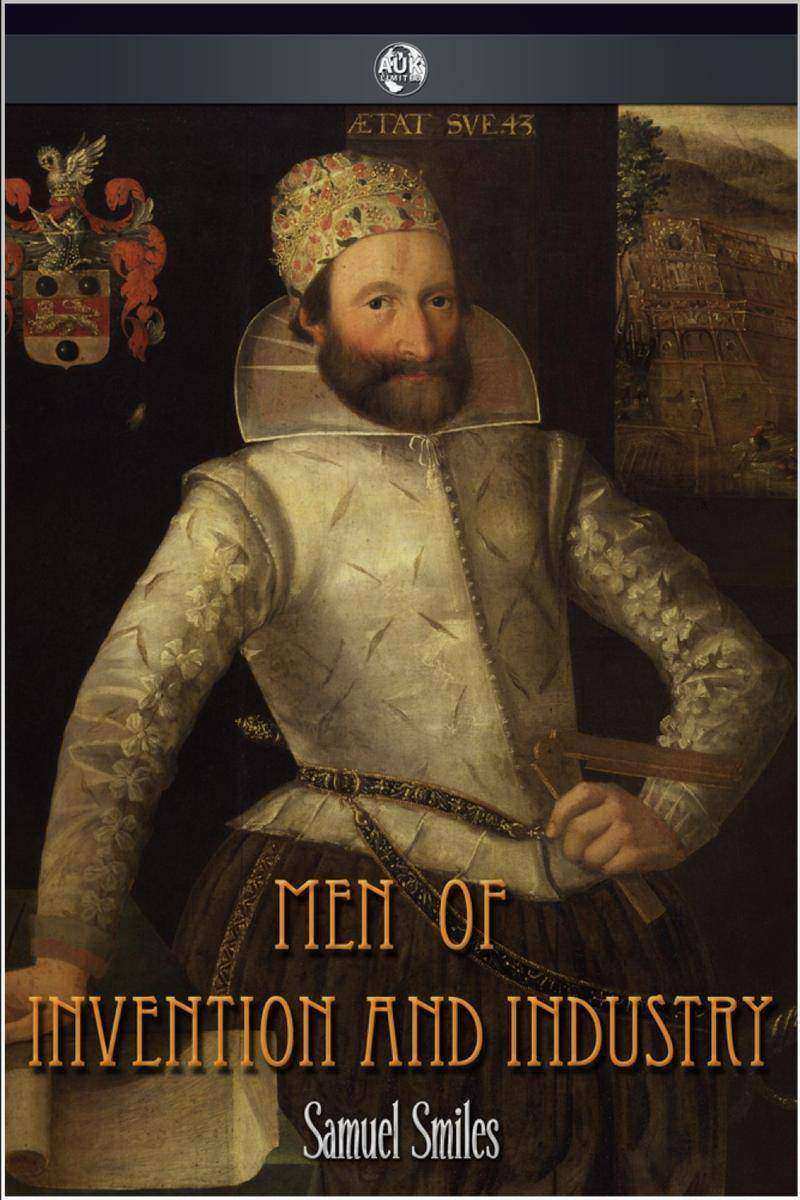
Men of Invention and Industry
¥19.52
A fascinating collection of biographies of great inventors and industrialists.
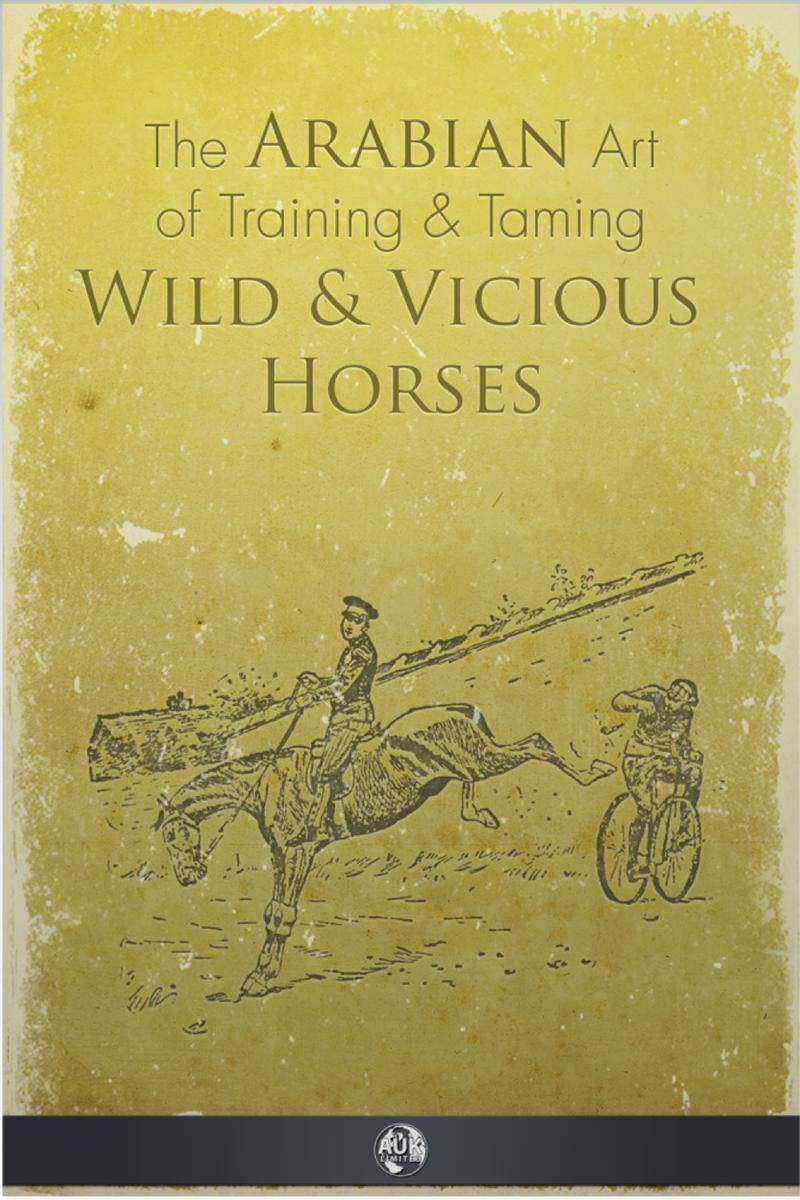
Arabian Art of Taming and Training Wild and Vicious Horses
¥19.52
Published in 1853, this guide covers all the basics of calming, leading and seating wild horses.

Introduction to Yoga
¥19.52
Many people know Yoga as a form of stress-relieving fitness regime. This book delves into the rich philosophy and history of this ancient physical and mental discipline, in the form of four lectures given at the 32nd Anniversary of the Theosophical Society.
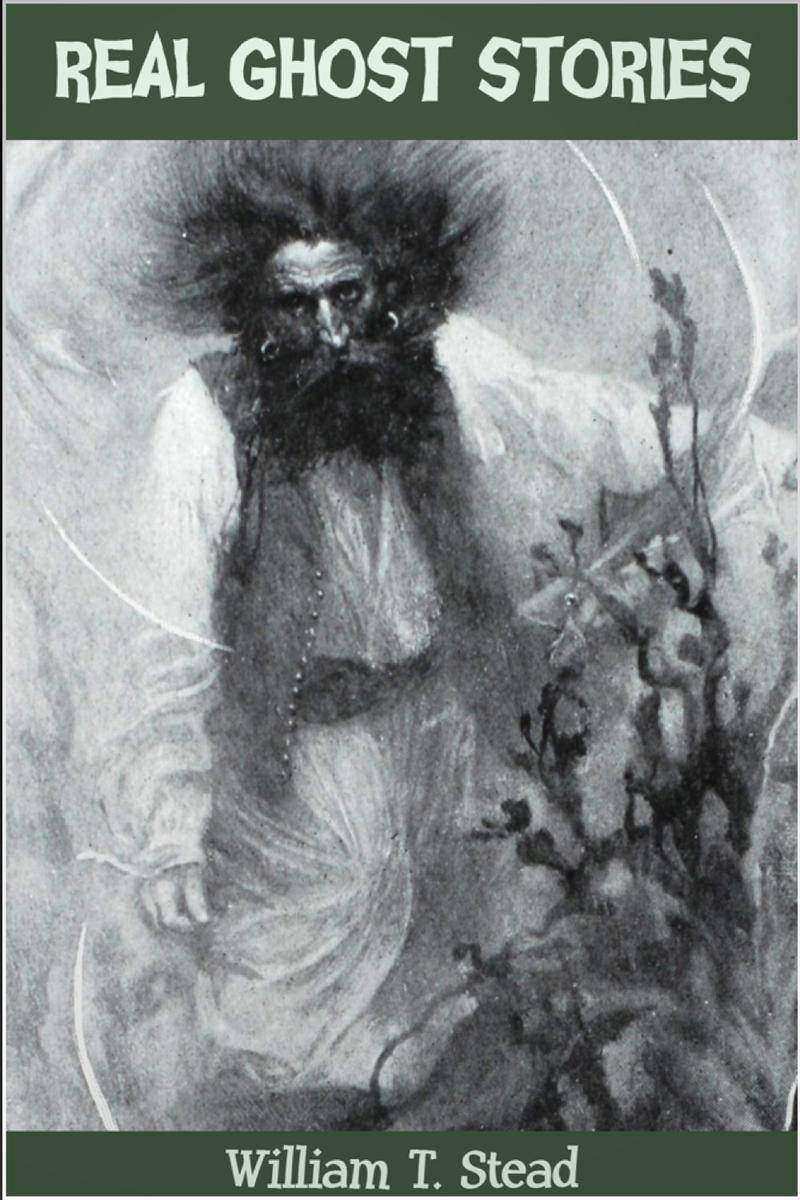
Real Ghost Stories
¥19.52
A fascinating collection of several accounts of ghostly encounters as well as an intriguing look at other paranormal phenomena such as clairvoyance and premonition. Written by pioneering investigative journalist W. T. Stead.

Tell Your Own Future
¥19.52
Knowing the future is the dream of most people. Astrologers, horse tipsters and actuaries all try to assess what will happen tomorrow and the day after. This book sets out 100 questions on subjects as diverse as romance, business, money and jobs. You choose a question, select a letter, consult the location chart...and hey presto - there is the answer that you have been longing to know! The best way to enjoy this trip into the future is with friends where everyone enjoys the pleasure (or discomfort!) of the revealing answers... The book is intended to bring a smile to your face - although feedback suggests that some of the answers have proved to be remarkably accurate!
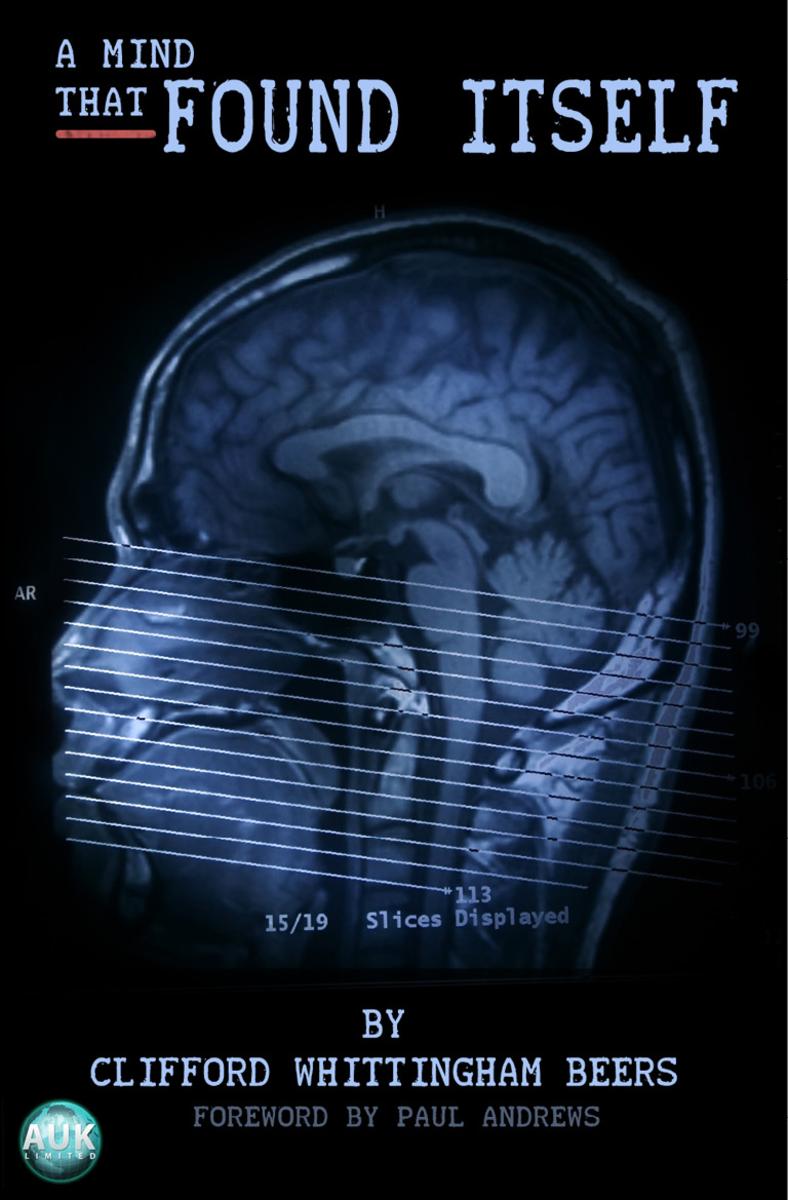
Mind That Found Itself
¥19.52
An autobiographical account of his confinement in a mental institution of the time, by Clifford Whittingham Beers.
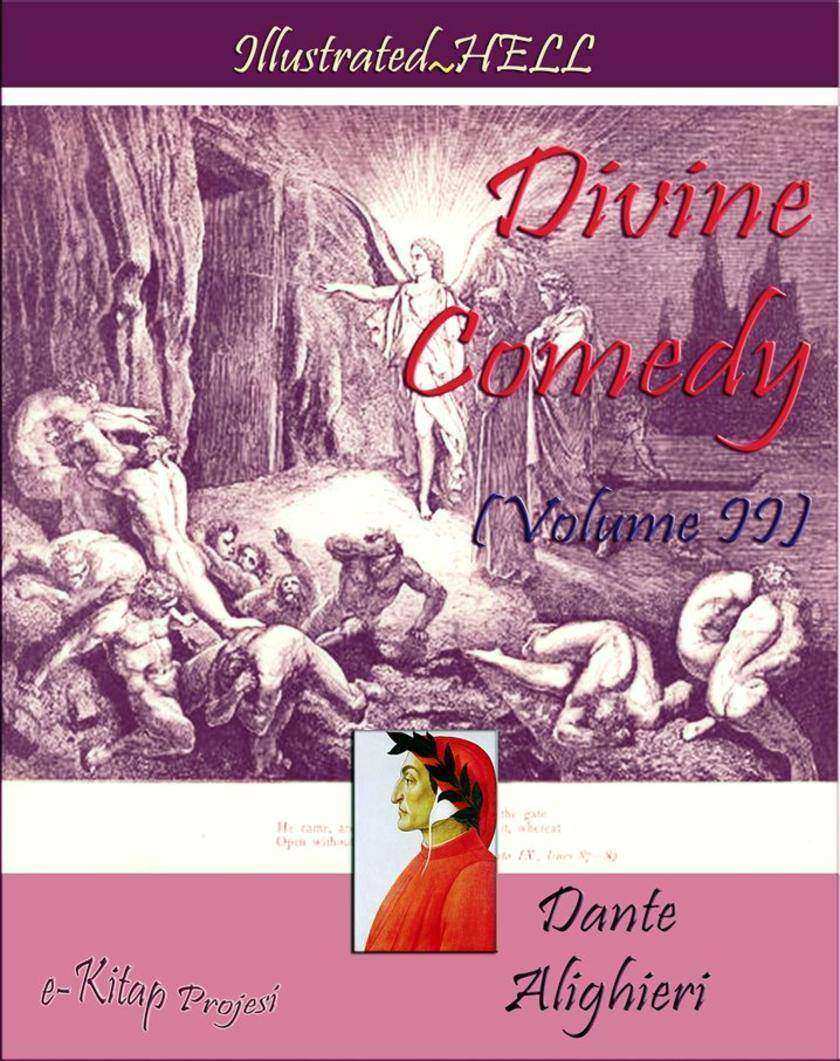
Divine Comedy (Volume II): Illustrated Hell
¥18.74
Micrographia is a historic book by Robert Hooke, detailing the then thirty-year-old Hooke's observations through various lenses. Published in September 1665, the first major publication of the Royal Society, it was the first scientific best-seller, inspiring a wide public interest in the new science of microscopy. It is also notable for coining the biological term cell. Observations: Hooke most famously describes a fly's eye and a plant cell (where he coined that term because plant cells, which are walled, reminded him of a monk's quarters). Known for its spectacular copperplate engravings of the miniature world, particularly its fold-out plates of insects, the text itself reinforces the tremendous power of the new microscope. The plates of insects fold out to be larger than the large folio itself, the engraving of the louse in particular folding out to four times the size of the book. Although the book is best known for demonstrating the power of the microscope, Micrographia also describes distant planetary bodies, the wave theory of light, the organic origin of fossils, and various other philosophical and scientific interests of its author. Publication: Published under the aegis of The Royal Society, the popularity of the book helped further the society's image and mission of being "the" scientifically progressive organization of London. Micrographia also focused attention on the miniature world, capturing the public's imagination in a radically new way. This impact is illustrated by Samuel Pepys' reaction upon completing the tome: "the most ingenious book that I ever read in my life." Hooke also selected several objects of human origin; among these objects were the jagged edge of a honed razor and the point of a needle, seeming blunt under the microscope. His goal may well have been as a way to contrast the flawed products of mankind with the perfection of nature (and hence, in the spirit of the times, of biblical creation). About Author: Robert Hooke (1635 – 1703) was an English natural philosopher, architect and polymath.His adult life comprised three distinct periods: as a scientific inquirer lacking money; achieving great wealth and standing through his reputation for hard work and scrupulous honesty following the great fire of 1666, but eventually becoming ill and party to jealous intellectual disputes. These issues may have contributed to his relative historical obscurity. He was at one time simultaneously the curator of experiments of the Royal Society and a member of its council, Gresham Professor of Geometry and a Surveyor to the City of London after the Great Fire of London, in which capacity he appears to have performed more than half of all the surveys after the fire. He was also an important architect of his time – though few of his buildings now survive and some of those are generally misattributed – and was instrumental in devising a set of planning controls for London whose influence remains today. Allan Chapman has characterised him as "England's Leonardo".Robert Gunther's Early Science in Oxford, a history of science in Oxford during the Protectorate, Restoration and Age of Enlightenment, devotes five of its fourteen volumes to Hooke.Hooke studied at Wadham College during the Protectorate where he became one of a tightly knit group of ardent Royalists led by John Wilkins. Here he was employed as an assistant to Thomas Willis and to Robert Boyle, for whom he built the vacuum pumps used in Boyle's gas law experiments. He built some of the earliest Gregorian telescopes and observed the rotations of Mars and Jupiter. In 1665 he inspired the use of microscopes for scientific exploration with his book, Micrographia. Based on his microscopic observations of fossils, Hooke was an early proponent of biological evolution. He investigated the phenomenon of refraction, deducing the wave theory of light, and was the first to suggest that matter expands when heated and that air is made of small particles separated by relatively large distances. He performed pioneering work in the field of surveying and map-making and was involved in the work, though his plan for London on a grid system was rejected in favour of rebuilding along the existing routes. He also came near to an experimental proof that gravity follows an inverse square law, and hypothesised that such a relation governs the motions of the planets, an idea which was subsequently developed by Newton.

The Valley of Fear: Illustrated
¥18.74
Darwin, ?nsan dahil tüm canl? türlerinin do?al se?i-lim yoluyla bir ya da birka? ortak ata-dan evrildi?ini ?ne sürmü? ve o günün ?artlar?na g?re bu teoriyi destekleyen pek ?ok kan?t sunmu?tur. Darwin'in fikirleri üzerine in?a edilen modern evrim teorisi, bugün biyoloji biliminin temeli ve birle?tirici ??esidir. Evrimin ger?ekle?ti?i ger?e?i Charles Darwin'in ya?ad??? d?nemde, do?al se?ilim teorisinin evrimin ana a??klamas? oldu?u ise 1930'lu y?llarda bilim dünyas? taraf?ndan kabul g?rmü?tür. Darwin'in orijinal teorileri modern evrimsel biyolojinin temelini olu?turmakta, hayat?n ?e?itlili?i üzerine birle?tirici bir mant?ksal a??klama sunmaktad?r. Darwin'in Hayat? da dahil Evrim teorisi ve türlerin k?keni eserini tüm y?nleriyle ele alan bu ba?ucu eserini mutlaka okuman?z? ?neriyoruz.. DARW?N K?MD?R? ?nsan dahil tüm?canl??türlerinin?do?al se?ilim?yoluyla bir ya da birka??ortak atadan?evrildi?ini??ne sürmü? ve o günün ?artlar?na g?re bu teoriyi destekleyen pek ?ok kan?t sunmu?tur.?Darwin'in fikirleri üzerine in?a edilen modern?evrim teorisi, bugün?biyoloji?biliminin temeli ve birle?tirici ??esidir. Evrimin ger?ekle?ti?i ger?e?i Charles Darwin'in ya?ad??? d?nemde, do?al se?ilim teorisinin evrimin ana a??klamas? oldu?u ise 1930'lu y?llarda bilim dünyas? taraf?ndan kabul g?rmü?tür.?Darwin'in orijinal teorileri modern evrimsel biyolojinin temelini olu?turmakta, hayat?n ?e?itlili?i üzerine birle?tirici bir mant?ksal a??klama sunmaktad?r. Darwin'in?do?a tarihine?duydu?u ilgi, ?nce?Edinburgh ?niversitesi'nde?t?p, sonra?Cambridge ?niversitesi'nde?teoloji?okurken geli?ti. Beagle?gemisinde yapt??? be? senelik yolculuk s?ras?nda, zaman?n me?hur jeolo?u?Charles Lyell'?n ortaya att???, ge?mi?teki jeolojik süre?lerin bugünkülerle ayn? oldu?unu savunan teoriyi destekleyecek pek ?ok g?zlem yapt? ve iyi bir jeolog olarak ünlendi.?Ayn? yolculukta, canl?lar?n co?rafi da??l?m? ve?fosiller?üzerine yapt??? dikkatli g?zlemler sonucunda, türlerin birbirine d?nü?ümüyle ilgilenmeye ba?lad? ve 1838'de?do?al se?ilim?fikrini geli?tirdi.?Daha ?nce benzer fikirlerin "sapk?nl?k" olarak nitelendirildi?ini ve bast?r?ld???n? g?rmü? oldu?undan, uzun süre fikirlerini en yak?n arkada?lar? d???nda kimseye a?mad?.?Olas? itirazlara en iyi ?ekilde cevap verebilmek i?in ara?t?rma yapmaya ve kan?t toplamaya ba?lad?.?1858'de?Alfred Russell Walla-ce'dan ald??? bir mektubu okuyunca, Wallace-'?n da kendisininkine benzer bir teori geli?tirdi?ini anlad?, ve nihayet teorisini yay?mlamaya karar verdi. 1859'da yay?mlad????On the Origin of Speci-es?(Türlerin K?keni ?zerine) adl? kitab?, canl?lar?n ortak atalardan evrilerek ?e?itlendi?i fikrinin geni? kabul g?rmesini sa?lad?. Daha sonra yay?mlad????The Descent of Man, and Selection in Relation to Sex?(?nsan?n Türeyi?i, ve Cinsiyete Mahsus Se?ilim) kitab?nda insan evrimini ve cinsel se?ilim fikrini inceledi.?The Expression of the Emotions in Man and Animals (?nsan ve Hayvanlarda Duygular?n ?fadesi) adl? kitab?nda ise insanlar?n ve hayvanlar?n duygular?n? ifade edi? ?ekilleri aras?ndaki benzerlikleri ortaya koydu.
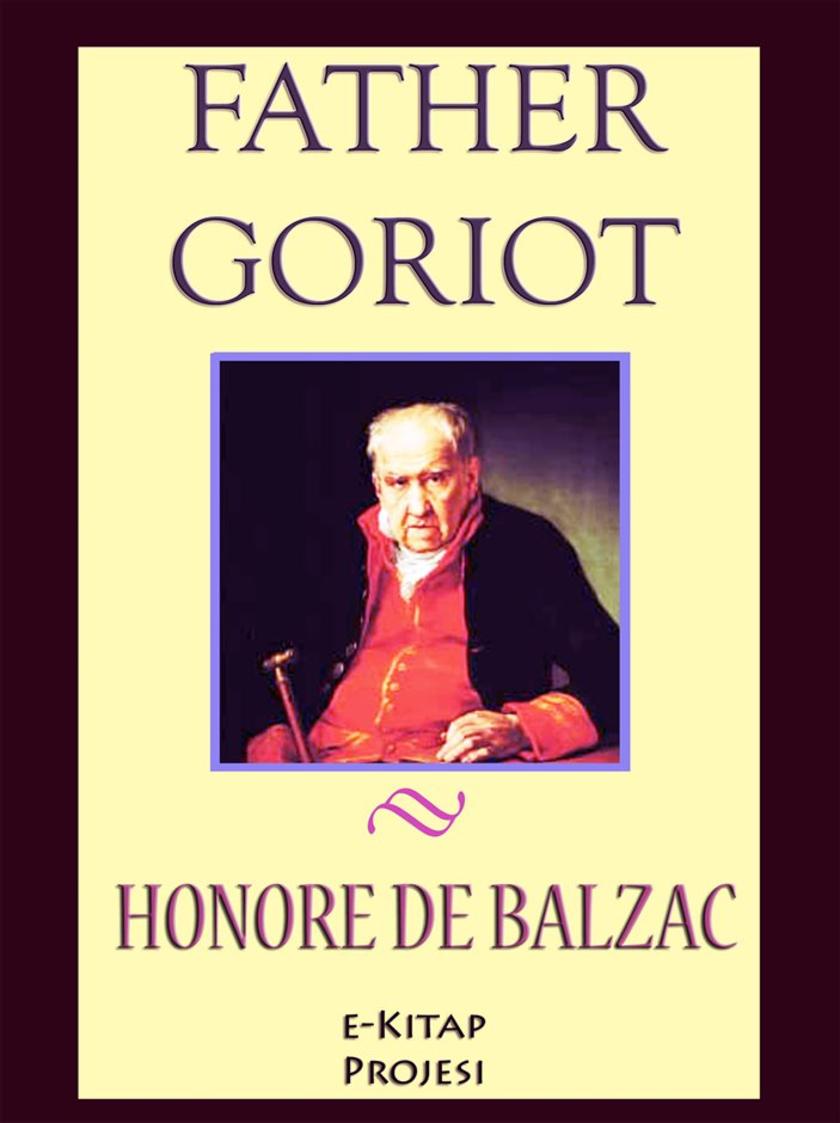
Father Goriot
¥18.74
In 1861, Henry Dircks, a civil engineer, of London, published a work entitled "Perpetuum Mobile; or, Search for Self-Motive Power, During the Seventeenth, Eighteenth and Nineteenth Centuries." The book contains 599 pages, and was followed in 1870, by a second series by the same author entitled "Perpetuum Mobile, or a History of the Search for Self-Motive Power from the Thirteenth, to the Nineteenth Century." In these two books there is amassed a wonderful amount of material showing on the part of the author diligence, great patience and wide and thorough search.The author of these works was not enamoured of his subject, and his books clearly show that he was not writing them because of any interest he had in the subject of Perpetual Motion. On the contrary, they appear to have been written because of a deep detestation entertained by the author for the subject of Perpetual Motion, and a contemptuous pity for any one seriously interested in the subject. Mr. Dircks's works may be said to be the works of a scold. His sentiments were deep, and his impulses strong, which accounts for the vast amount of labor he did in the preparation of his books. Those books are now out of print, and it is believed by the author of this book that they may well remain so. They contain much material that no one would be justified in wading through. The most complicated mechanisms devised by enthusiastic dreamers are shown in the same detail with which the inventors described them in presenting them to the public, or to the patent offices. Little is to be gained by this. So complicated are many of the devices that only technically trained engineers could read them understandingly, and few technically trained engineers are now greatly interested in self-motive power devices. We believe that every useful or interesting purpose is served if enough devices are collected, classified and presented to show the various principles relied upon by the inventors; with an explanation of why they failed—i. e., wherein the principles relied upon are wrong, and while possibly not out of harmony with any mechanical principles then known, are entirely out of harmony with principles since discovered and now well known. In the preparation of this volume a vast amount of the information furnished by the two works of Mr. Dircks has been rearranged, reclassified, and used.Everyone who has to any extent, by environment, associated with the mass of people who are not technically educated, knows that the persons who are still interested in the subject of Perpetual Motion, and who still seek its attainment, are not technically trained engineers or mathematicians, but for the greater part untrained people of naturally strong mechanical sense, and of natural mechanical and mathematical adaptation.This book is written for the perusal of that large class of people. It is not designed as an argument either for or against the possibility of the attainment of Perpetual Motion. The author is content to classify and present—clearly, it is hoped—the leading endeavors that have been known in that field of effort, and to explain their failure. It is believed by the author that the perusal of the present volume by anyone whose mind has been attracted by the subject of Perpetual Motion will result in an enlightenment, and, it is also believed, will have a tendency to direct his mind from a struggle with theories long ago exploded, and may result in directing his efforts to things practical, and not without hope of attainment.This work is offered only to minds mechanically or mathematically inclined. It is not even hoped that it will interest people who prefer fiction to fact, nor people who read simply for idle entertainment. ABOUT AUTHOR: The author has no apology to offer for the production of this book. He has spent his life in environments that have brought him into constant contact with mechanics, artisans and laborers as well as professional men, engineers, chemists and technical experts of various types. He knows a great many men—young men, for the most part—are constantly working on the old, old problem of Perpetual Motion; that much money, and much time are being spent in search of a solution for that problem which all scientific and technical men tell us is impossible of solution.It is believed by the author that a classification and presentation of selected groups of the devices produced in the past by which it was by the inventor believed, self-motive power had been attained, will save much work in fields already thoroughly exploited.So far as the author knows no book on the subject has appeared since 1870. The various encyclopedias published contain articles on the subject, but they are necessarily brief, and not satisfying to young men who have become interested in the subject.

The Secret Agent: "A Simple Tale"
¥18.74
AMONG the ranks of the great astronomers it would be difficult to find one whose life presents more interesting features and remarkable vicissitudes than does that of Galileo. We may consider him as the patient investigator and brilliant discoverer. We may consider him in his private relations, especially to his daughter, Sister Maria Celeste, a woman of very remarkable character ; and we have also the pathetic drama at the close of Galileo's life, when the philosopher drew down upon himself the thunders of the Inquisition. The materials for the sketch of this astonishing man are sufficiently abundant. We make special use in this place of those charming letters which his daughter wrote to him from her convent home. More than a hundred of these have been preserved, and it may well be doubted whether any more beautiful and touching series of letters addressed to a parent by a dearly loved child have ever been written. An admirable account of this correspondence is contained in a little book entitled "The Private Life of Galileo," published anonymously by Messrs. Macmillan in 1870, and I have been much indebted to the author of that volume for many of the facts contained in this chapter. Galileo was born at Pisa, on 18th February, 1564. He was the eldest son of Vincenzo de Bonajuti de Galilei, a Florentine noble. Notwithstanding his illustrious birth and descent, it would seem that the home in which the great philosopher's childhood was spent was an impoverished one. It was obvious at least that the young Galileo would have to be provided with some profession by which he might earn a livelihood. From his father he derived both by inheritance and by precept a keen taste for music, and it appears that he became an excellent performer on the lute. He was also endowed with considerable artistic power, which he cultivated diligently. Indeed, it would seem that for some time the future astronomer entertained the idea of devoting himself to painting as a profession. His father, however, decided that he should study medicine. Accordingly, we find that when Galileo was seventeen years of age, and had added a knowledge of Greek and Latin to his acquaintance with the fine arts, he was duly entered at the University of Pisa. AMONG the ranks of the great astronomers it would be difficult to find one whose life presents more interesting features and remarkable vicissitudes than does that of Galileo. We may consider him as the patient investigator and brilliant discoverer. We may consider him in his private relations, especially to his daughter, Sister Maria Celeste, a woman of very remarkable character ; and we have also the pathetic drama at the close of Galileo's life, when the philosopher drew down upon himself the thunders of the Inquisition. The materials for the sketch of this astonishing man are sufficiently abundant. We make special use in this place of those charming letters which his daughter wrote to him from her convent home. More than a hundred of these have been preserved, and it may well be doubted whether any more beautiful and touching series of letters addressed to a parent by a dearly loved child have ever been written. An admirable account of this correspondence is contained in a little book entitled "The Private Life of Galileo," published anonymously by Messrs. Macmillan in 1870, and I have been much indebted to the author of that volume for many of the facts contained in this chapter.
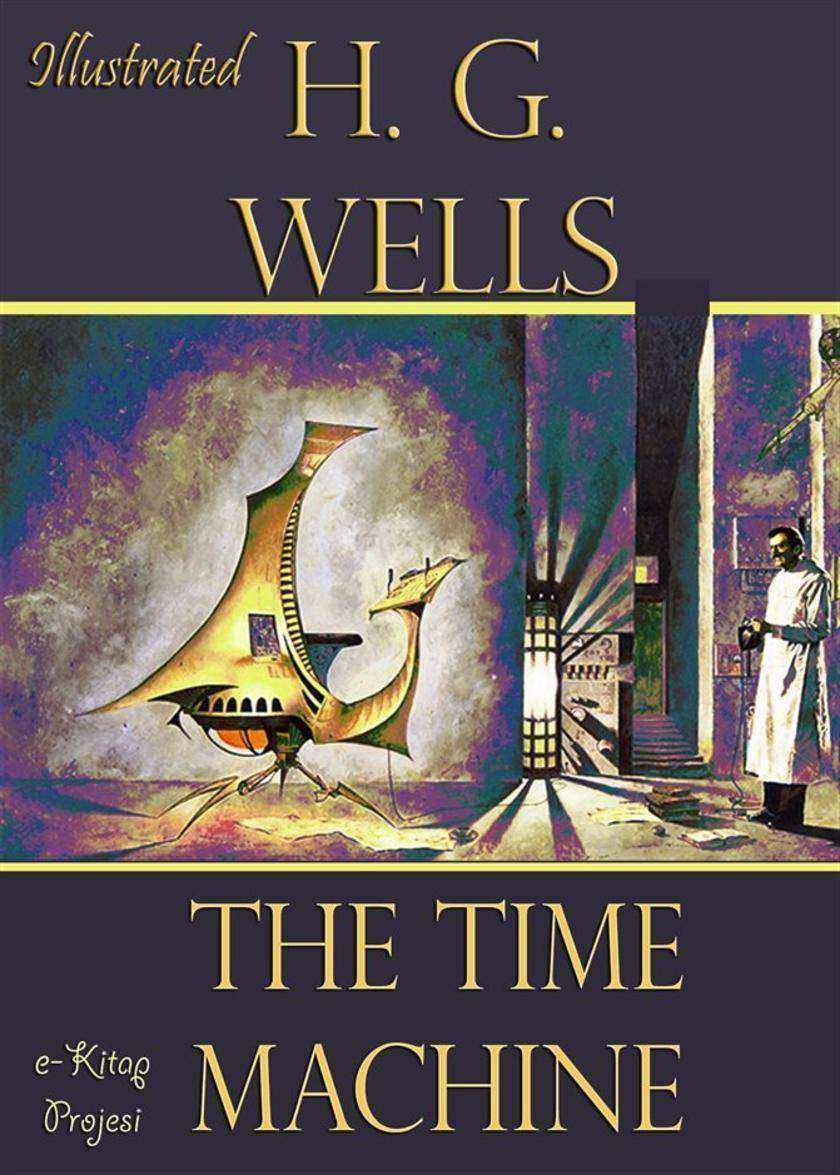
The Time Machine
¥18.74
zet olarak tüm tp almalar & Bilim felsefesi & Hayat hikayesi & Metodolojisi ve Tahlilleri ilaveli bni Sin, daha ocukluunda, evresini hayrete düüren bir zek ve hafza rnei gstermitir. Küük yata ann bütün, ilimlerini renmiti. Gündüz ve gece okumakla vakit geirir, mum nda saatlerce, ou zaman sabahlara kadar alrd. Pek az uyurdu. Buhara Emiri Nuh bni Mansur’u ar bir hastalktan kurtard ve bu yüzden de Samanoullar saraynn kütüphanesinde alma iznini ald. Bu sayede pek ok eseri elinin altnda bulduu iin vaktini kitap okumak ve yazmakla geirdi. Hükümdar ldüü zaman o, henüz yirmi yandayd ve Buhr'dan ayrlarak Harzem'e gitti: EI-Brni gibi büyük bir hret ve deerin, onun alkanlna, bilgisine deer vermesi, kendisini yanna kabul etmesi, beraber almas, hakknda kskanla yol at. Bu yüzden takibata bile urad. Harzem'de barnamayarak yeniden yollara dütü. ehirden ehre dolaarak nihayet Hemedan'a kadar geldi ve orada kalmaya karar verdi. bni Sn, ou fizik, astronomi ve felsefeyle ilgili olarak 150 civarnda eser yazmt. Farsa olan birka dnda bunlarn hepsi Arapa'dr. ünkü o devirde ilim eserlerini Arap diliyle yazmak detti. Arapa'ya bu bakmdan deer verilirdi. Bilhassa tp ilmine dair aratrmalar son derece orijinal ve dorudur. Bu yüzden dou ve bat hekimliine kelimenin tam anlamyla, 600 yl, hükmetmitir. Eserleri Bat dillerine Latince yoluyla evrilerek Avicenna diye hrete ulaan bni Sin, yanl olarak bir süre Avrupa'da ranl hekim ve filozof olarak tannmtr. Bunun da sebebi, eserlerini Türke yazmam olmasndandr… Bununla beraber, batllar da kendisini Hkim-i Tb, yani hekimlerin piri ve hükümdar olarak kabul etmilerdir. 16 yandayken pratik hekimlie balayan bni Sin, resm saray doktorluu da yapmtr. NDEKLER: BN- SNA’NIN HAYATI ve ALIMALARI ESERLER bn-i Sina’nn Felsefi Anlay Varlk ve Mantk BN- SNA VE VARLIK FELSEFES VARLIK FELSEFES VE BN SNA* Varla likin Grüleri: BN- SNA’DA 3 MESELE A- VARLIK BLNC’NN NCEL B- NAYET VE ERRN LAH KAZADA BULUNUU (KTLK PROBLEM) C-FLLERN ALLAHTAN SUDURU BN- SNA’NIN BLM FELSEFES SLAMDA SMYA VE BN- SNA’NIN SMYAYA KATKILARI.. Tarihi zgemii nkar ve Muhalefet Batya Etkisi BN- SNA’NIN TIP FELSEFES BN- SNANIN TIP TARHNDEK YER…. Tp Sahasndaki Baz Bulular TIBBIN KANUNU ESER HAKKINDA.. BN- SNA’NIN FA FELSEFES BN- SNA’NIN VARLIK VE EVREN FELSEFES BN- SNA VE SUDUR NAZARYES… BN- SNA VE SPNOZADA DN VE FELSEFE LKLER B. BN SN FELSEFESNDE LEMN KIDEM/EZELL SORUNU C. GENEL DEERLENDRME SLAM METAFZ VE BN- SNA slam Metafiziine Ksa Bir Bak: bn Sn’ya Gre Nefsin Bedenden Ayrl Sonras Durumu BN- SNA’NIN “El-rtü ve’t-Tenbhtü fi’l-Mantk ve’l-Hikme” Kitab Hakknda BN- SNA VE ETM BN- SNA’NIN PSKOLOJK YAKLAIMLARI bn Sina’nn Aile Siyasetine Dair Risalesindeki Temel Grüleri KEND AZINDAN BN- SNA Genlik ve Olgunluk Devresi (M. 997 -1005) Seyahatler Devresi (M.1005-1014) (bn-i Sn’nn Hayatnda) Büveyhler Devresi bn-i Sn’nn Hayatnda Kkyler Devresi (M. 1024 -1037) BN- SNA’DA NAMAZ VE FA BALANTISI BN- SN’NIN NAMAZ RSALES Namazn Mahiyeti: Namaz: Namaz, nefs-i natkann, gk cisimlerine benzemesi ve ebed sevap istemek iin Mutlak olan Hakk’a tapnmas demektir. Namazn hakikati: Namazn Zahir ve Batna Ayrlmas Beyanndadr: Bu blüm nceki iki ksm namazdan her birinin kime ve hangi snfa vacib olduunu bildirir: BN- SNA’NIN RUH LE LGL KASDES ZETLE BN- SNANIN BLME KATKILARI BN- SNANIN UNUTULMAYAN SZLER
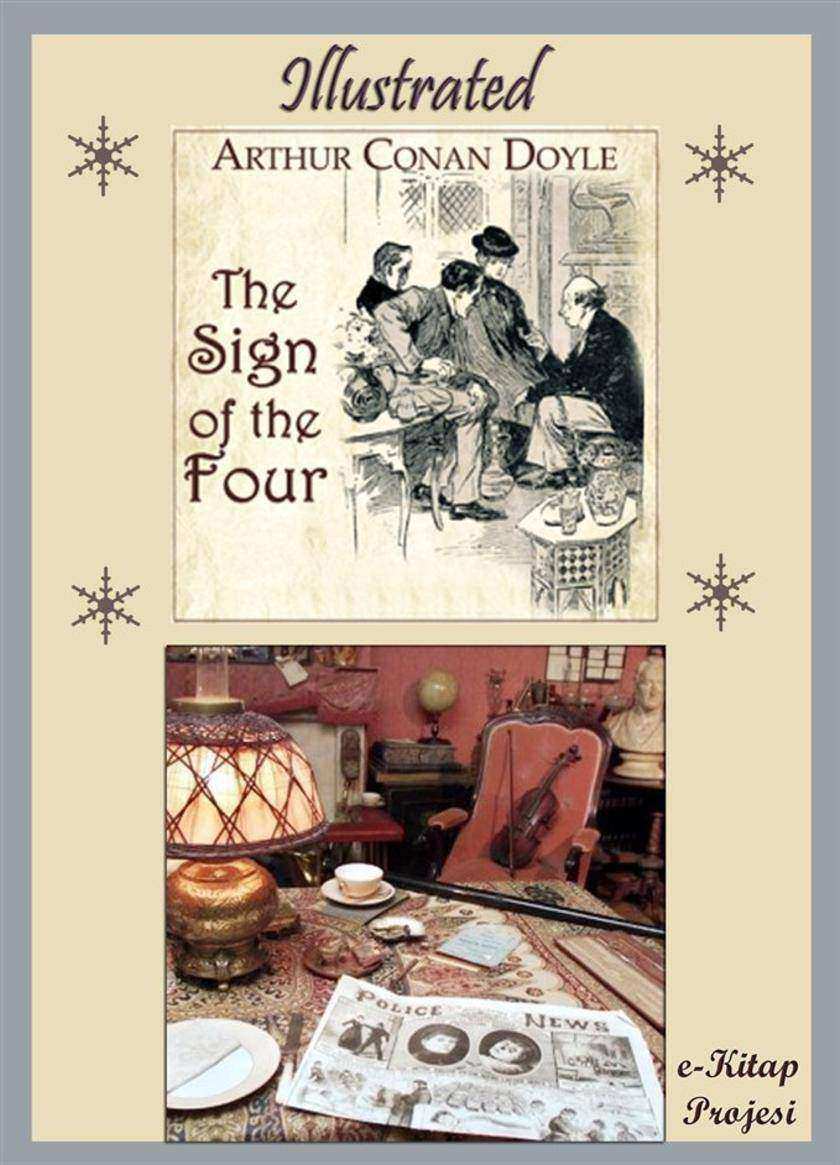
The Sign of the Four
¥18.74
Copernicus, the astronomer, whose discoveries make him the great predecessor of Kepler and Newton, did not come from a noble family, as certain other early astronomers have done, for his father was a tradesman. Chroniclers are, however, careful to tell us that one of his uncles was a bishop. We are not acquainted with any of those details of his childhood or youth which are often of such interest in other cases where men have risen to exalted fame. It would appear that the young Nicolaus, for such was his Christian name, received his education at home until such time as he was deemed sufficiently advanced to be sent to the University at Cracow. The education that he there obtained must have been in those days of a very primitive description, but Copernicus seems to have availed himself of it to the utmost. He devoted himself more particularly to the study of medicine, with the view of adopting its practice as the profession of his life. The tendencies of the future astronomer were, however, revealed in the fact that he worked hard at mathematics, and, like one of his illustrious successors, Galileo, the practice of the art of painting had for him a very great interest, and in it he obtained some measure of success.??By the time he was twenty-seven years old, it would seem that Copernicus had given up the notion of becoming a medical practitioner, and had resolved to devote himself to science. He was engaged in teaching mathematics, and appears to have acquired some reputation. His growing fame attracted the notice of his uncle the bishop, at whose suggestion Copernicus took holy orders, and he was presently appointed to a canonry in the cathedral of Frauenhurg, near the mouth of the Vistula.? To Frauenburg, accordingly, this man of varied gifts retired. Possessing somewhat of the ascetic spirit, he resolved to devote his life to work of the most serious description. He eschewed all ordinary society, restricting his intimacies to very grave and learned companions, and refusing to engage in conversation of any useless kind. It would seem as if his gifts for painting were condemned as frivolous; at all events, we do not learn that he continued to practise them. In addition to the discharge of his theological duties, his life was occupied partly in ministering medically to the wants of the poor, and partly with his researches in astronomy and mathematics. His equipment in the matter of instruments for the study of the heavens seems to have been of a very meagre description. He arranged apertures in the walls of his house at Allenstein, so that he could observe in some fashion the passage of the stars across the meridian. That he possessed some talent for practical mechanics is proved by his construction of a contrivance for raising water from a stream, for the use of the inhabitants of Frauenburg. Relics of this machine are still to be Been.??The intellectual slumber of the Middle Ages was destined to be awakened by the revolutionary doctrines of Copernicus. It may be noted, as an interesting circumstance, that the time at which he discovered the scheme of the solar system has coincided with a remarkable epoch in the world's history. The great astronomer had just reached manhood at the time when Columbus discovered the new world.??Before the publication of the researches of Copernicus, the orthodox scientific creed averred that the earth was stationary, and that the apparent movements of the heavenly bodies were indeed real movements. Ptolemy had laid down this doctrine 1,400 years before. In his theory this huge error was associated with so much important truth, and the whole presented such a coherent scheme for the explanation of the heavenly movements, that the Ptolemaic theory was not seriously questioned until the great work of Copernicus appeared. No doubt others, before Copernicus, had from time to time in some vague fashion surmised, with more or less plausibility, that the sun..

Украшаем выпечку масляным кремомм
¥17.74
Tomasz Stawiszyński, filozof, publicysta zwi?zany mi?dzy innymi z ?Newsweekiem”, odwa?nie wylicza psychoterapeutyczne mity i pi?tnuje wielbion? bezkrytycznie psychologi?. Przekonuje, ?e wspó?czesna kultura i psychoterapia promuj? idea? cz?owieka, którego nie sposób zrealizowa? w praktyce. Tymczasem zdrady, depresja i chaos nie s? czym?, co trzeba zawsze pot?pia? i eliminowa?. Przeciwnie, odpowiednio zrozumiane czyni? ?ycie g??bszym i prawdziwszym, cho? niekoniecznie ?atwiejszym. A ?atwo?? ?ycia – któr? obiecuj? dzisiaj ró?ni terapeuci albo coachowie – to kolejny mit, bo d??enie do niej wzmacnia tylko problemy, jakich odruchowo chcemy si? pozby?. Ta fascynuj?ca ksi??ka przygl?da si? podejrzliwie zmitologizowanym prawdom psychologicznym, które przez ostatnie dekady dobrze nakr?ci?y nam w g?owie i zrobi?y wod? z mózgu. Tomasz Stawiszyński, filozof z talentem felietonisty, nie tylko ratuje nasz zdrowy rozs?dek, lecz tak?e prowadzi w kierunku szerszego, bardziej uniwersalnego rozumienia psychologii cz?owieka w uj?ciu Jamesa Hillmanna jako specyficznej wiedzy o otaczaj?cym nas dziwnym, skomplikowanym i wielopi?trowym ?wiecie. Dla wszystkich, którym nie wystarcza psychologiczna tradycja. Olga Tokarczuk Nie wierzcie – mówi Tomasz Stawiszyński – w sprowadzenie na ?wiat ?cz?owieka idealnego“. Nie wierzcie zw?aszcza wtedy, gdy wmawiaj? wam zewsz?d, ?e to wy nim mo?ecie zosta?, ?e macie w sobie tak? moc. A tymczasem to ideologiczna zmora, to potwór, który czyha na wasz? wolno??. prof. Zbigniew Miko?ejko, filozof religii, Instytut Filozofii i Socjologii PAN

Джемы, конфитюры, пастила, варенье из ягод и фруктов.
¥17.74
П?д час роботи над книгою авторка побувала майже на вс?х континентах, в?дв?дала науков? бази в троп?ках Амазон?? ? на островах Великого бар’?рного рифу, сп?лкувалася з сотнями людей. Колберт шука? в?дпов?дь на питання, що станеться, якщо темпи вимирання прискоряться. Ця книга — не наукова праця. Вона — швидше велетенська стаття для природничого журналу з? св?товим ?м’ям, яку ми ма?мо можлив?сть читати укра?нською. Ел?забет Колберт у сво?й книз? н?кого не повча?. Зрештою, нав?ть не попереджа? про насл?дки нашого бездумного користування планетою. Вона — майстерна ? досв?дчена репортерка, яка простими словами розпов?да? про складн? реч?, в?д котрих залежить майбутн? нашо? планети ?, зрештою, людсько? цив?л?зац?? загалом.

The Hound of the Baskervilles: Sherlock Holmes #5
¥16.27
Egy csodálatos fantáziával és íráskészséggel megáldott fiatal n? került a budapesti Moravcsik-féle elmeklinikára. Akkor végezte ott éppen klinikai gyakorlatait dr. Brenner József fiatal orvos, Csáth Géza néven országos hír? novellista és zenekritikus. Rendkívül sokoldalú tehetség: zenél és zenét szerez, felfedez? érték? zenekritikát ír, ráérez a legújabb festészeti ízlésre, s útt?r?je a novellam?fajnak. Akármibe fog, mindig és mindenben megel?zi kora gondolkodását, ízlését, m?veltségét. ?gy van ez orvostudományi munkásságával is. A nagy tekintély?, de konzervatív iskolát képvisel? Moravcsik professzor égisze alatt a szakmában még igazán sehol el nem ismert freudi módszereket alkalmazza betege pszichés védelmi mechanizmusainak f?ltárásában, megismerésében. A korszak magyar tudományosságát a teljes nyitottság jellemezte az új t?rekvések iránt. Még a konzervatív Moravcsik és orvosgárdája is elt?rte, s?t segítette kezd? orvosa freudista kísérleteit. Egy zseniális adottságokkal rendelkez? elmebeteg, egy zseniális fiatal orvos és lélekbúvár író, valamint egy minden újra fogékony tudományos k?rnyezet szerencsés találkozása eredményeképpen született meg Az elmebetegségek pszichikus mechanizmusa.
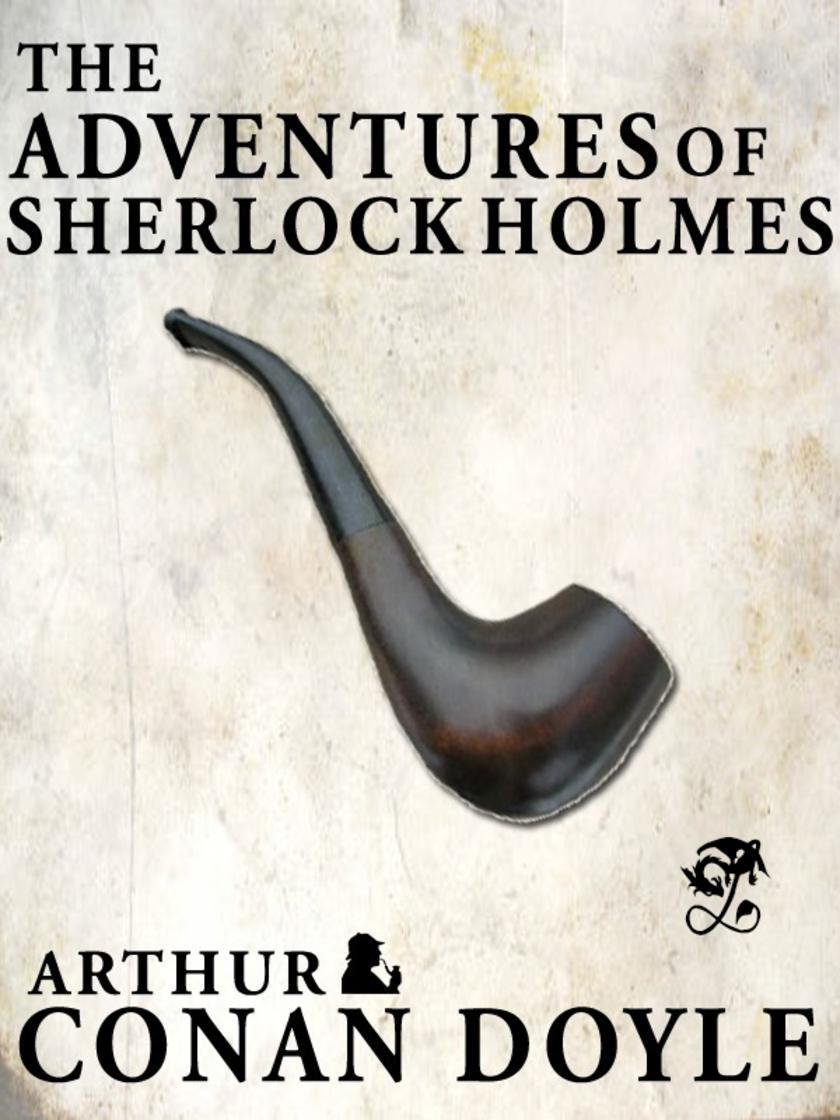
The Adventures of Sherlock Holmes: Sherlock Holmes #3
¥16.27
"Un ghid absolut esen?ial pentru omenire. ?n?elepciunea pu?in cunoscut? care se reg?se?te ?n aceast? carte poate pune cap?t suferin?ei umane pe ?ntregul Glob, salv?nd oamenii de ravagiile pe care industria cancerului continu? s? le produc? din cauza ineficien?ei depline de care d? dovad?." – Mike Adams, Director al Laboratorului ?tiin?ific CWC Labs "Ty Bollinger ofer? pacien?ilor, oamenilor de ?tiin?? ?i celor care activeaz? ?n domeniul s?n?t??ii o explica?ie excelent? privitor la motivul pentru care viziunea actual? pe care o avem despre cancer este gre?it? ?i arat? ?n acela?i timp cum poate fi prevenit, prezent?nd o gam? larg? de op?iuni de tratament, care sunt mult mai eficiente ca raport risc-beneficii cost ?n compara?ie cu protocoalele de oncologie curente. Cartea de fa?? poate fi pentru tine un ghid valoros care s? te ajute s? previi sau chiar s? stopezi aceast? boal?. Cancerul poate fi ?nvins, iar Ty ne arat? cum." – Patrick Quillin, Ph.D., R.D., C.N.S., F.A.C.N., autor al lucr?rii ?Lupt? ?mpotriva cancerului prin alimenta?ie” "?Adev?rul despre cancer? este ghidul necesar pentru prevenirea, tratamentul ?i eradicarea cancerului folosindu-ne de leacurile oferite de Dumnezeu. ?n aceast? carte revolu?ionar?, Ty Bollinger dezv?luie o ?ntreag? gam? de metode naturale de amplificare a imunit??ii ?i de energizare a trupului pentru a ?nvinge cancerul. Cite?te aceast? carte! S-ar putea s?-?i salveze via?a." – Josh Ax, D.C., autor al lucr?rii ?Eat Dirt” "Cartea lui Ty, ?Adev?rul despre cancer?, este o adev?rat? revela?ie. Pe l?ng? faptul c? ofer? pacien?ilor speran?? pentru viitor, le pune de asemenea la dispozi?ie informa?iile ?i resursele necesare pentru prevenirea ?i combaterea cancerului. Primul pas spre s?n?tate este autovindecarea, iar aceast? carte este una dintre cele mai bune c?r?i de auto-vindecare de pe pia??." – Leigh Erin Connealy, M.D.
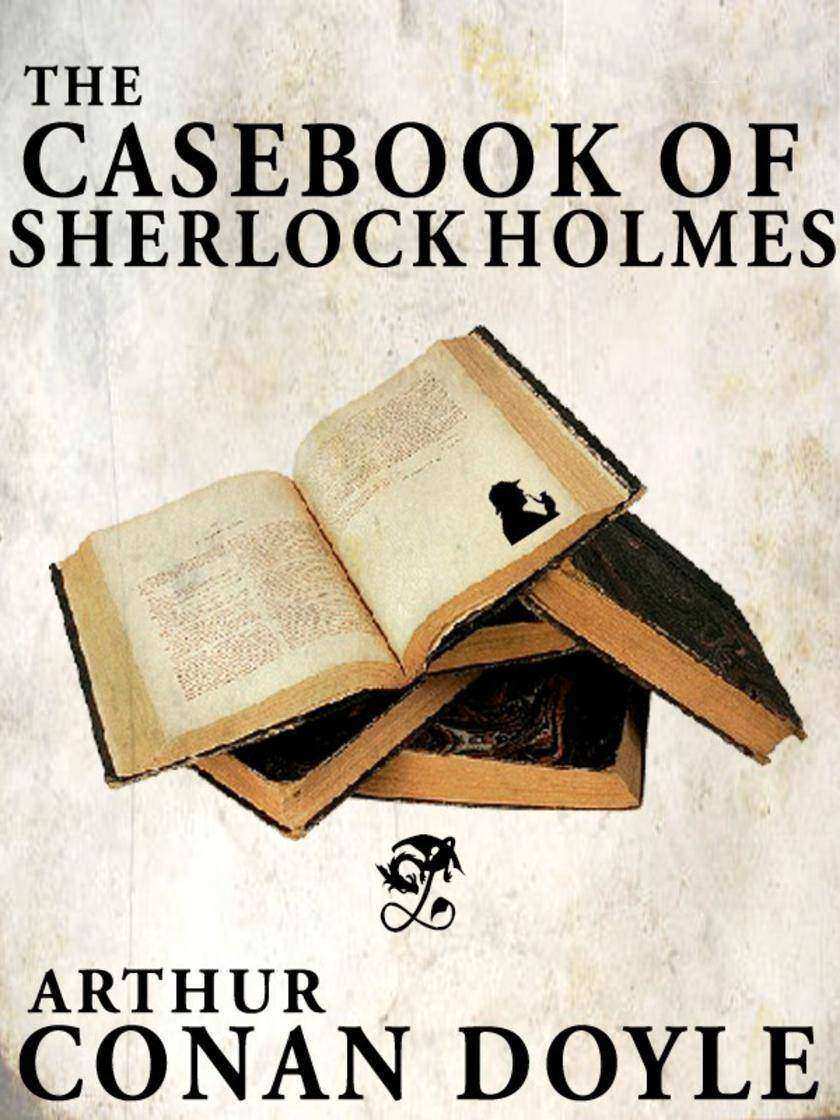
The Casebook of Sherlock Holmes: Sherlock Holmes #9
¥16.27
The publication of Darwin’s The Origin of Species in 1859 marked a dramatic turning point in scientific thought. The volume had taken Darwin more than twenty years to publish, in part because he envisioned the storm of controversy it was certain to unleash. Indeed, selling out its first edition on its first day, The Origin of Species revolutionized science, philosophy, and theology. Darwin’s reasoned, documented arguments carefully advance his theory of natural selection and his assertion that species were not created all at once by a divine hand but started with a few simple forms that mutated and adapted over time. Whether commenting on his own poor health, discussing his experiments to test instinct in bees, or relating a conversation about a South American burrowing rodent, Darwin’s monumental achievement is surprisingly personal and delightfully readable. Its profound ideas remain controversial even today, making it the most influential book in the natural sciences ever written—an important work not just to its time but to the history of humankind.
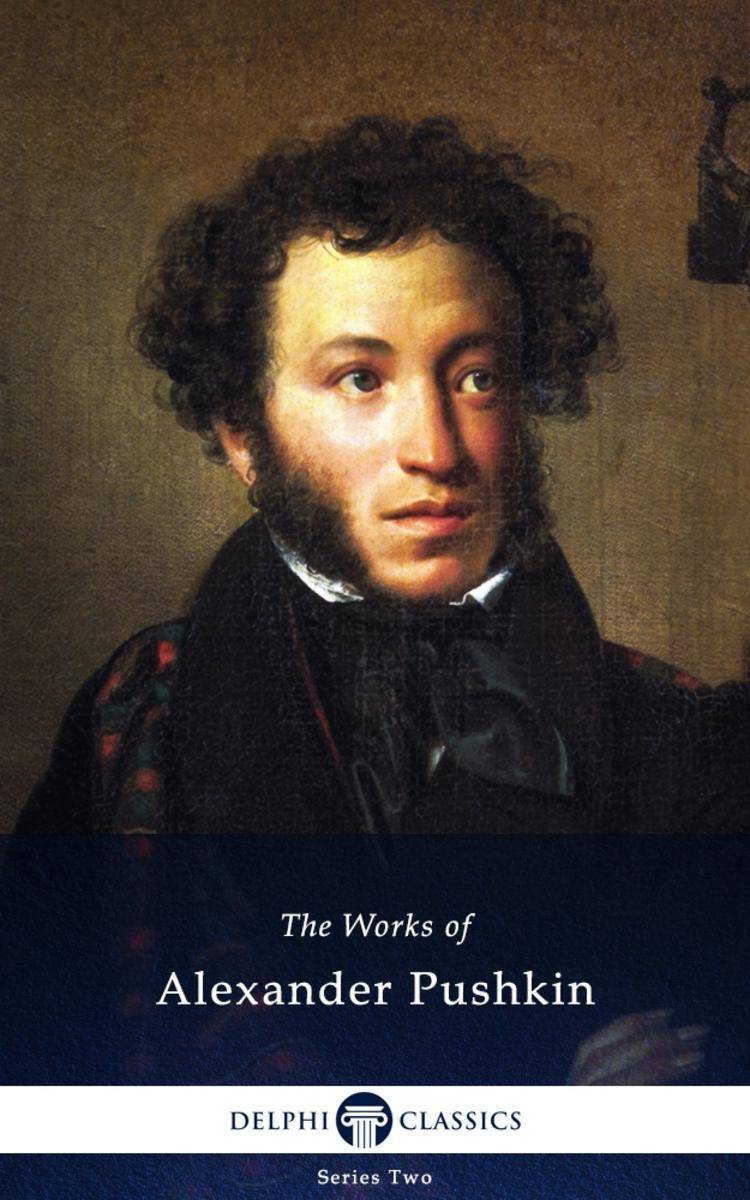
Delphi Works of Alexander Pushkin (Illustrated)
¥16.27
Russia's Father of Literature deserves a place in all digital libraries. This comprehensive eBook presents the major works of Alexander Pushkin, with beautiful illustrations, informative introductions and the usual Delphi bonus material. * Beautifully illustrated with images relating to Pushkin's life and works * Concise introductions to the poetry and other works * Images of how the books were first printed, giving your eReader a taste of the original texts * A selection of many of Pushkin's greatest poems, first time in digital print. * Excellent formatting of the texts * Almost the complete short fiction, including rare short stories appearing for the first time in digital print * Rare plays, with contents tables * Special criticism section, with three essays evaluating Pushkin's contribution to literature * Features a bonus biography - discover Pushkin's literary life * Scholarly ordering of texts into chronological order and literary genres Please visit www.delphiclassics.com to browse our range of exciting titles CONTENTS: The Poetry SHORT POEMS THE FOUNTAIN OF BAKHCHISARAY THE GIPSIES POLTAVA THE BRONZE HORSEMAN RUSLAN AND LYUDMILA LIST OF POEMS IN ALPHABETICAL ORDER The Verse Novel EUGENE ONEGIN The Short Stories and Unfinished Novels PETER THE GREATS NEGRO MARIE THE SHOT THE SNOWSTORM THE UNDERTAKER THE POSTMASTER MISTRESS INTO MAID THE QUEEN OF SPADES KIRDJALI THE CAPTAINS DAUGHTER EGYPTIAN NIGHTS DUBROVSKY The Plays BORIS GODUNOV THE STONE GUEST MOZART AND SALIERI The Criticism THE ROMANTIC POETS: POUSHKIN by Rosa Newmarch POUSHKIN: HIS WORKS by Rosa Newmarch LECTURES ON RUSSIAN LITERATURE: PUSHKIN by Ivan Panin The Biography A SHORT BIOGRAPHICAL NOTICE OF ALEXANDER PUSHKIN by Henry Spalding

50 Quick Diet Tips
¥14.62
Do you want to lose weight? Are you struggling with your diet? These 50 quick diet tips will help you lose weight, and also keep that weight off. Using common sense and not fads, the advice in the book will help you lose the weight goal you are wanting to.

Az ?t tornacsuka a Pannon Csillagdában
¥13.16
Книга расскажет о причинах возникновения таких серьезных хронических недугов как радикулит и ревматизм, их формах и соответствующих народных методах и рецептах лечения, проверенных многими поколениями. И сейчас не утратили свою эффективность, став незаменимыми помощниками официальной медикаментозной медицины, оздоровительные банные процедуры, минеральные воды, отвары и настои лекарственных трав для внутреннего и наружного применения, разнообразные массажи и комплексы лечебных упражнений, рецепты лечения эфирными маслами, продуктами пчеловодства, солями и металлами. Их подробное описание для регулярного применения, а также рецепты блюд сбалансированной ежедневной диеты для лечебного питания помогут вернуть здоровье и силу вашему позвоночнику и суставам.Kniga rasskazhet o prichinah vozniknovenija takih ser'eznyh hronicheskih nedugov kak radikulit i revmatizm, ih formah i sootvetstvujushhih narodnyh metodah i receptah lechenija, proverennyh mnogimi pokolenijami. I sejchas ne utratili svoju jeffektivnost', stav nezamenimymi pomoshhnikami oficial'noj medikamentoznoj mediciny, ozdorovitel'nye bannye procedury, mineral'nye vody, otvary i nastoi lekarstvennyh trav dlja vnutrennego i naruzhnogo primenenija, raznoobraznye massazhi i kompleksy lechebnyh uprazhnenij, recepty lechenija jefirnymi maslami, produktami pchelovodstva, soljami i metallami. Ih podrobnoe opisanie dlja reguljarnogo primenenija, a takzhe recepty bljud sbalansirovannoj ezhednevnoj diety dlja lechebnogo pitanija pomogut vernut' zdorov'e i silu vashemu pozvonochniku i sustavam.
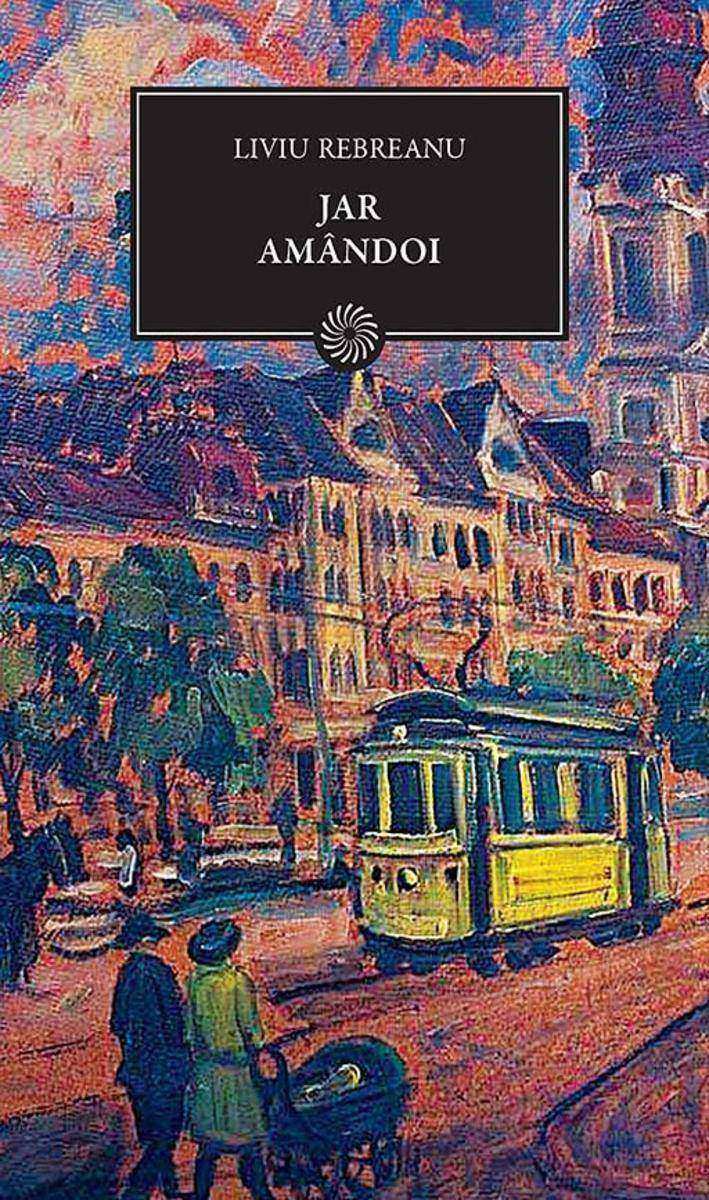
Jar. Amandoi
¥13.08
ntr-un trafic incontrolabil, a intra pe contrasens nu e un lucru de mirare. Ce te faci ns dac exist riscul s dai nas n nas cu… favorita preedintelui Cine pltete asigurarea“Liviu Brtescu nu se teme de sanciuni. Nu folosete cuvinte dantelate, nu ridic pe nimeni n slvi. El doar se strduiete s conduc atent…




 购物车
购物车 个人中心
个人中心



